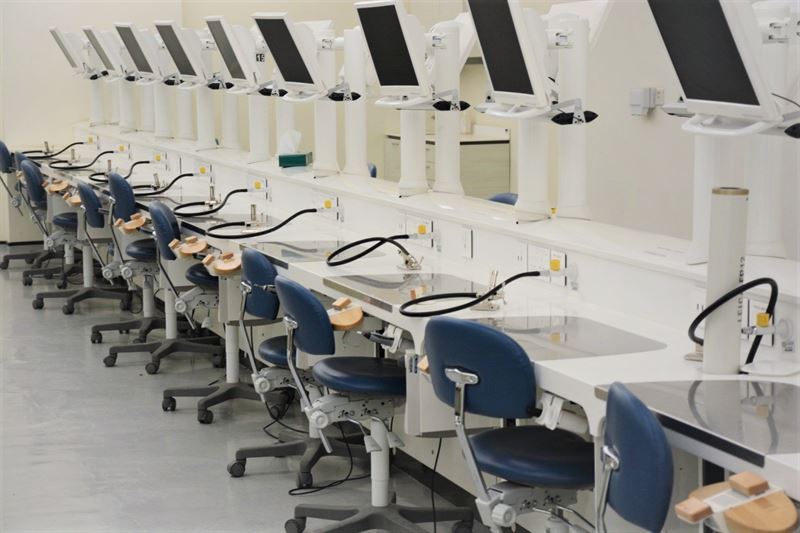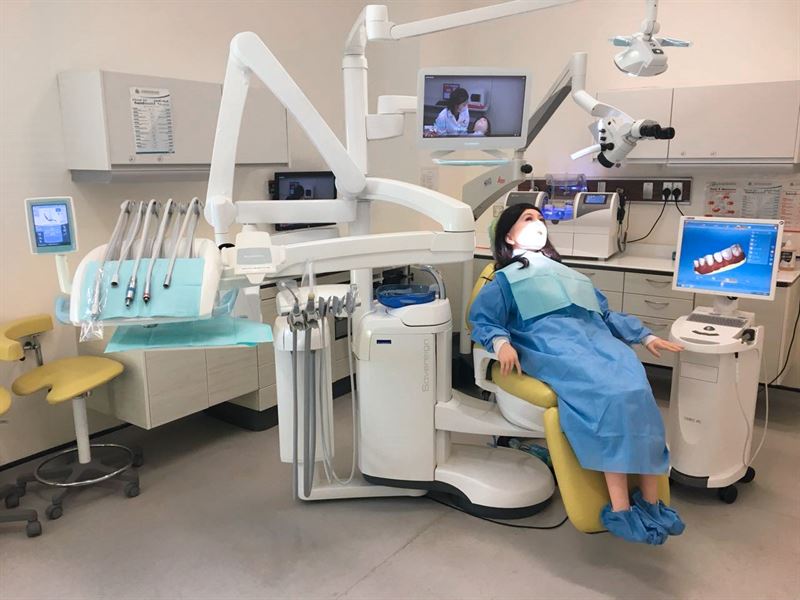Embracing digital dentistry

Dentistry has a long history, dating back to the dawn of humankind and civilisation. From the first documented evidence in 7000 BC during the Indus Valley civilisation up until present times, dentistry has gone through a long, fruitful journey. Dental education is no exception, as it has undergone many different eras and transformed along the way – to the point where what is considered inapplicable today was once the epitome of dentistry.
Formal institutional dental education began its journey in the United States in 1840 when the Baltimore College of Dental Surgery was chartered by the State of Maryland. A school that is known to be the first dental college in the world. Since then, hundreds of dental schools have been established around the world, each following different philosophies while all working towards one universal aim − excellence in dental education.
Relying on innovation and technology
The College of Dentistry at King Saud bin Abdulaziz University for Health Sciences (COD-KSAUHS) is located in Riyadh, the capital of Saudi Arabia, and is one of the country’s twenty-eight dental schools currently offering dental education. The COD-KSAUHS establishment was approved in December 2006, contributing to the University’s mission of providing advanced health education programs in a distinguished academic environment that relies on innovation, the latest technologies and the most modern educational means.

Preclinical lab at COD-KSAUHS
The COD at KSAUHS is guided by the best elements of scientific research, offering comprehensive health care to patients, raising awareness and educating the community in order to enhance the efforts aimed at developing healthcare services in the country internally and externally. This coincides with the vision of the university which aims to be a distinguished scientific center that applies the best methods of evidence-based e-health education in order to attract the best students and faculty members.
Furthermore, part of our mission as a college is to be a major contributor to raising the community’s ability to confront oral health problems by graduating a group of distinguished dentists – dentists who will provide oral health care to all patients in our community. Another important part of our mission is focusing on scientific research, which in return will contribute to quality assurance and continuous improvement of dental education and practice.
To achieve this, we have had to start from where other successful dental colleges have started and follow the path of innovative dental programs and leading facilities that have made digital technology the driving force behind their success.
Preparing students for future technology
Our partnership with Planmeca Group began early on during the construction phases of the COD building and its facilities in 2008. In addition to being a prominent player in the advancement of digital dentistry, Planmeca Group is a global leader in several fields of healthcare technology. We selected Planmeca’s products as we found it to be the only company at the time that could offer such advanced and sophisticated technology as part of its product lines. They were able to offer one integrated solution covering both the preclinical and clinical phases, which has enabled us to prepare our students with top-level technology and make them competent to excel in both current and future fields of dentistry.

The COD-KSAUHS was one of the first dental schools in Saudi Arabia to incorporate digital dentistry into its undergraduate curriculum.
In 2010, the College accepted its first batch of students. Our students are continuously urged to learn and get accustomed to available technologies, from the ‘turn ON button’ to execution in preclinical labs, simulation labs and clinical facilities.
A great educational tool used in both preclinical and clinical phases is the Planmeca Romexis® imaging software and its wide range of clinical and laboratory modules. The software provides the tools to meet the imaging and planning needs of our students and faculties through its diagnostic, assessment, and planning features. It also meets the treatment planning requirements of their comprehensive dental care courses in the clinical phase.
The digital workflow is completed with Planmeca Emerald™ S intraoral scanners and Planmeca Creo® C5 3D printers. Additionally, different 3D teaching methods have been implemented to help students improve their spatial ability, interaction, critical thinking, and clinical connections through the integration of several dentistry disciplines.

Planmeca Emerald™ S intraoral scanners are in active use in the College of Dentistry.

Undergraduate student clinics
Although COD-KSAUHS is a relatively young college, the implementation of such technology along with its innovative curriculum and careful selection of faculties and students has played a major role in making us an example for many other colleges. In fact, for the past five years, our graduates have ranked first in terms of scores in the Saudi Dental Licensure Examination (SDLE).
Getting ready for the next phase of the digital revolution
As the digital revolution during the past and current decades has played a major role in reshaping dentistry in general, and dental education in particular, I believe that along with the development of digital dentistry, artificial intelligence will be the next phase in the dental revolution in the upcoming decades. The graduates of 2030 and onwards will face a new era of technology which will be abundantly available in the market, and they must be prepared to face this change. Therefore, dental colleges should incorporate the latest technology into their future dental curriculums.
Lastly, it is important to remember that the primary advantage of technology is that it enables individuals to accomplish whatever they set their minds to do. It enables individuals to be creative. It enables individuals to be productive. It enables people to learn things they previously believed were impossible to learn. With diversification and globalisation, a bright future can be anticipated in all domains of education and technology.

Copy: Dr Ali A. Al Eheideb, Dean, COD-KSAUHS
Images: Courtesy of COD-KSAUHS
Planmeca Oy and Planmeca Group
Planmeca Oy is one of the world's leading dental equipment manufacturers with a product range covering digital dental units, CAD/CAM solutions, world-class 2D and 3D imaging devices and comprehensive software solutions. Headquartered in Helsinki, Finland, Planmeca’s products are distributed in over 120 countries worldwide. With a strong commitment to pioneering innovations and design, it is among the largest privately held companies in its field. Planmeca Oy is part of the Finnish Planmeca Group, which operates in the field of healthcare technology. The Group's turnover in 2020 was MEUR 744, and it employs nearly 2,900 people worldwide.
www.planmeca.com
Tags:







